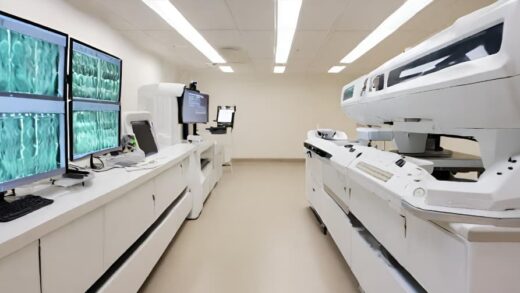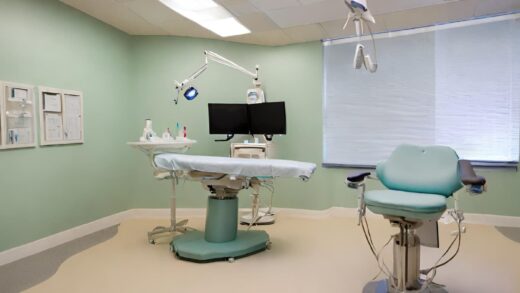High myopia, a severe form of nearsightedness, can significantly impact an individual’s quality of life. Activities like driving, reading, or recognizing faces can become challenging without proper vision correction. For those with high myopia, Photorefractive Keratectomy (PRK) stands as a potential solution. In this blog post, we will delve into the world of PRK surgery near me, exploring its advantages, candidacy criteria, potential risks, and considerations, all while keeping an eye on the surgery cost aspect.
Understanding High Myopia
High myopia, also known as severe nearsightedness, is characterized by a significant elongation of the eyeball, resulting in light rays focusing in front of the retina rather than directly on it. This leads to blurred vision, especially when looking at distant objects. The impact of high myopia on daily life can be substantial, affecting everything from reading to driving.
Exploring PRK as a Treatment Option
PRK, short for Photorefractive Keratectomy, is a type of refractive surgery designed to correct myopia by reshaping the cornea’s surface. Unlike LASIK, PRK myopia does not involve creating a corneal flap but rather removes the thin outer layer of the cornea, known as the epithelium, to access the underlying tissue. This makes PRK a potentially suitable option for individuals with high myopia.
Advantages of PRK for High Myopia
PRK offers several advantages when it comes to addressing high myopia:
Safety and Efficacy: PRK has a proven track record of safety and efficacy in correcting a wide range of refractive errors, including high myopia.
Stable and Long-Lasting Results: Many individuals who undergo PRK for high myopia experience stable and long-lasting vision correction, reducing their dependence on glasses or contact lenses.
No Corneal Flap: PRK does not involve the creation of a corneal flap, which can be an advantage for some high myopia patients concerned about potential flap-related issues.
Candidacy for PRK in High Myopia Cases
While PRK can be a promising solution, not everyone with high myopia may be a suitable candidate. Several factors influence candidacy, including:
Corneal Thickness: The thickness of the cornea is a crucial factor in determining candidacy. Individuals with adequate corneal thickness are more likely to be eligible for PRK.
Eye Health: Overall eye health is essential. Conditions that affect the health of the eye, such as keratoconus, may impact candidacy.
Stable Prescription: A stable prescription is necessary, as PRK aims to provide long-term vision correction. Frequent changes in prescription may affect eligibility.
Risks and Considerations
While PRK is a safe and effective procedure, it’s important to be aware of potential risks and considerations:
Temporary Discomfort: Some patients may experience temporary discomfort, including mild pain, burning, or foreign body sensation, in the days following PRK. These sensations typically subside as the eyes heal.
Light Sensitivity: Sensitivity to light, known as photophobia, is common during the initial recovery period. Wearing sunglasses and avoiding bright lights can help alleviate this discomfort.
Dry Eyes: Temporary dryness of the eyes may occur following PRK. The surgeon may prescribe lubricating eye drops to maintain eye moisture.
Healing Time: Unlike LASIK, which often provides rapid visual recovery, PRK may require a longer healing time. Vision may continue to improve over several weeks, and full stabilization can take a few months.
Strict Post-Operative Care: Adherence to the surgeon’s post-operative care instructions is crucial for a successful recovery. This includes using prescribed eye drops, avoiding rubbing the eyes, and attending follow-up appointments.
The Cost of PRK Surgery: What to Expect
Laser eye surgery cost 2023 cost can vary depending on several factors:
Geographical Location: The cost of PRK can significantly differ from one region to another. Areas with a higher cost of living may have higher surgical fees.
Clinic Reputation: Established clinics with experienced surgeons may charge higher fees. However, this can also provide added confidence in the quality of care.
Technology and Equipment: Clinics that invest in the latest laser technology may charge more for PRK surgery.
Additional Services: Some PRK providers include post-operative care and follow-up visits in their pricing, while others may charge separately.
Affordable PRK Options: Finding Quality Vision Correction Within Your Budget
For individuals concerned about the cost of PRK surgery, there are strategies to explore:
Insurance Coverage: Check if your health insurance covers any part of the procedure, especially if high myopia is affecting your daily life.
Financing Plans: Many clinics offer financing options to help make PRK surgery more affordable by breaking down the cost into manageable payments.
Comparing Multiple Providers: Seek quotes from different PRK providers to compare costs and services. However, prioritize quality and experience over price alone.
Consultation and Decision-Making
Before deciding on PRK surgery for high myopia, it’s crucial to:
Seek Professional Guidance: Consult with a qualified eye care professional to assess your suitability for PRK and discuss your specific needs and expectations.
Ask Questions: During the consultation, don’t hesitate to ask questions and seek clarification on any concerns you may have about the procedure, recovery, and cost.
Conclusion
PRK is a viable option for individuals with high myopia, offering safety, effectiveness, and long-term vision correction. While the cost of PRK surgery may vary, it’s essential to prioritize the quality of care and explore financing options if needed. A consultation with an experienced eye care professional is the first step toward addressing high myopia and regaining clear vision, ultimately improving your quality of life.


